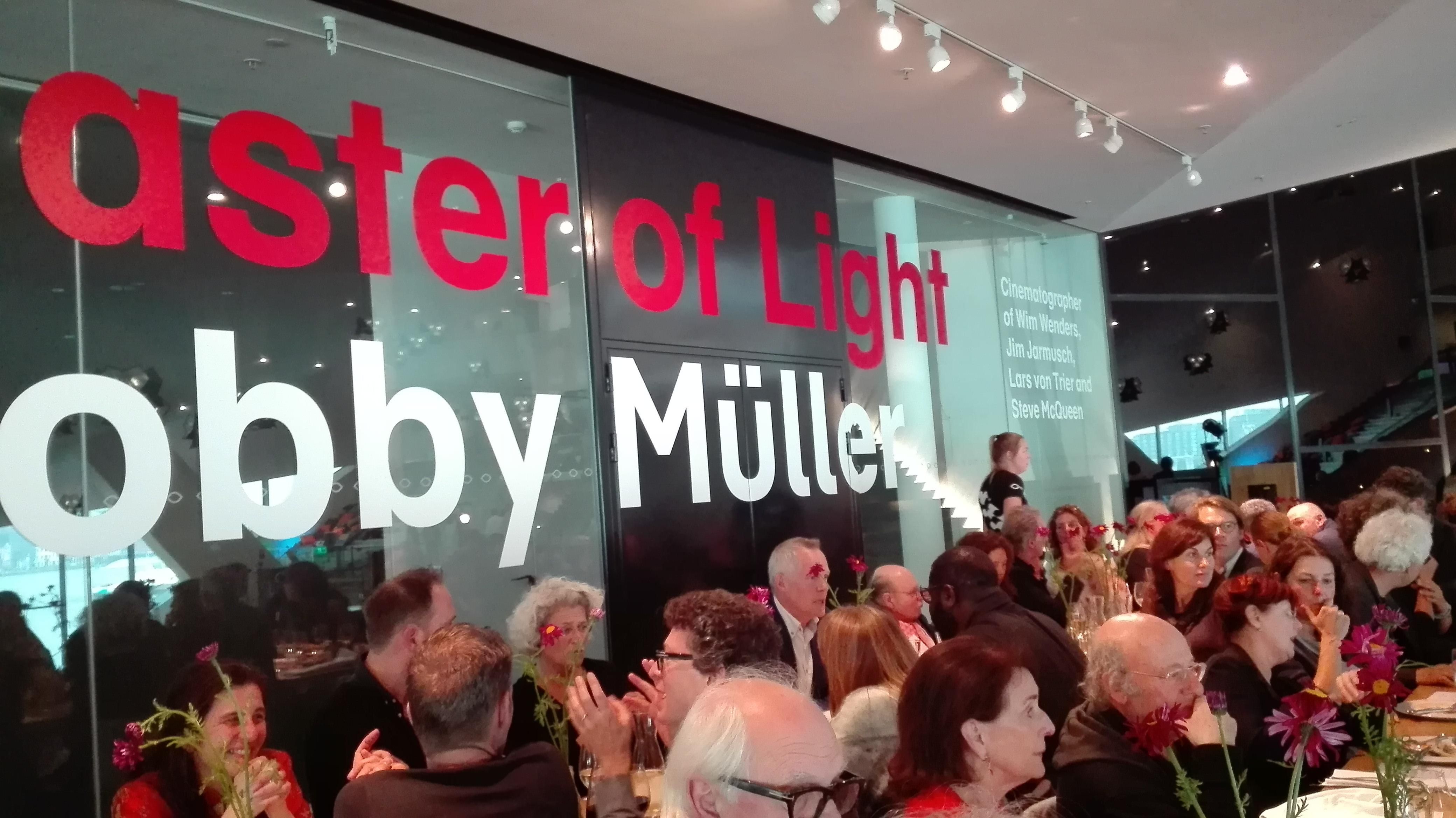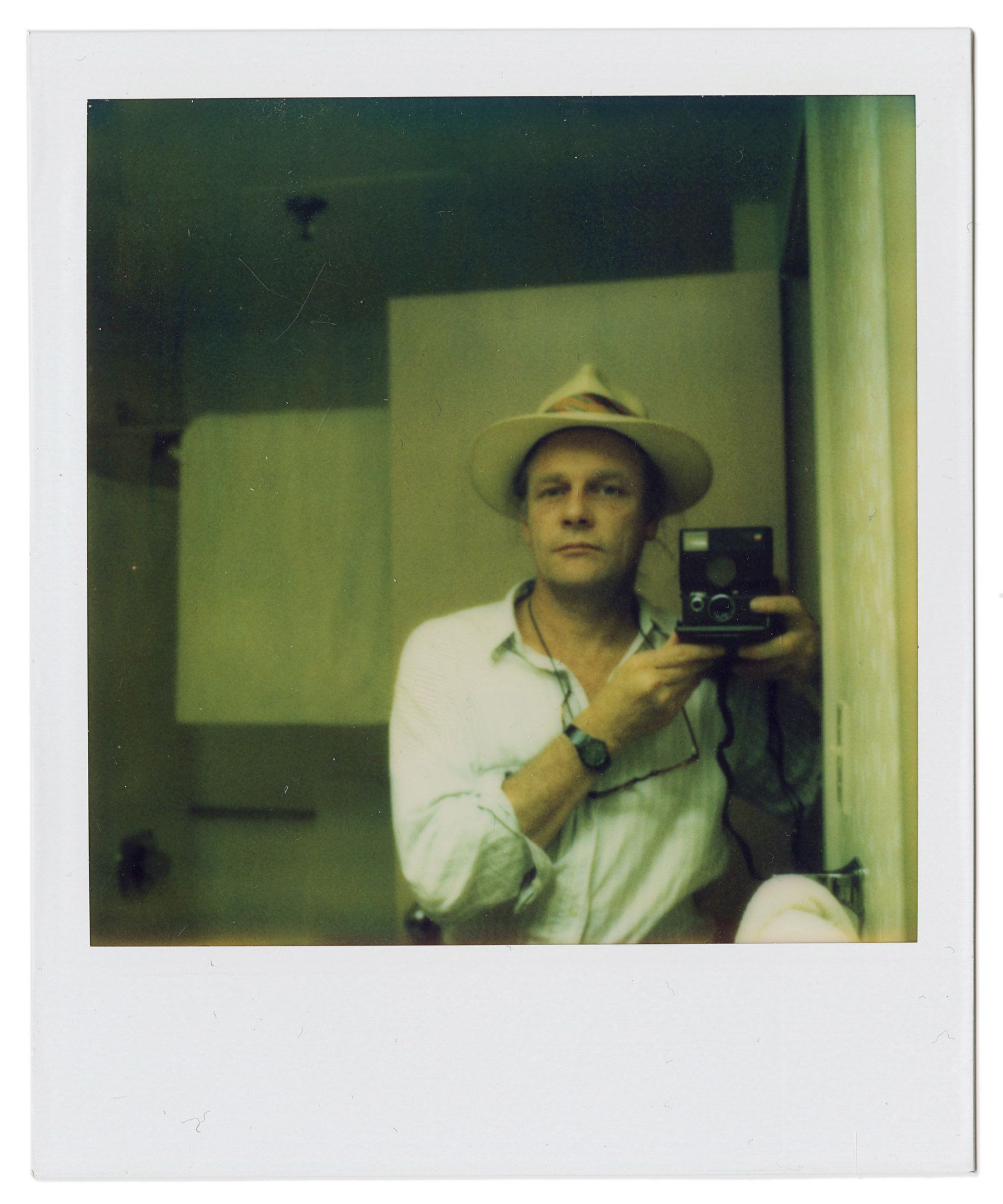Robby Müller: The Cinematic Genius Behind The Lens
When it comes to the world of cinematography, names like Robby Müller often get overshadowed by directors and actors. But if you're a true film enthusiast, you know that the magic of movies doesn't just happen in front of the camera. Behind every breathtaking shot, every stunning visual, and every unforgettable scene lies the talent of a cinematographer like Robby Müller. His work has left an indelible mark on cinema, and it's about time we gave him the recognition he deserves.
Now, you might be wondering, who exactly is Robby Müller? Well, buckle up, because we're diving deep into the life, career, and legacy of this legendary filmmaker. From his early days to his collaborations with some of the biggest names in the industry, Robby Müller's story is one of passion, creativity, and a relentless pursuit of excellence.
This article isn't just about celebrating his achievements; it's about understanding the impact he's had on the film industry and why his work continues to inspire filmmakers around the world. So, whether you're a cinephile, an aspiring cinematographer, or just someone who loves a great story, you're in for a treat. Let's get started!
Biography: Who Is Robby Müller?
Before we dive into the nitty-gritty of his career, let's take a moment to get to know the man behind the lens. Robby Müller was born on June 3, 1940, in Amsterdam, Netherlands. Growing up in a creative environment, he developed a deep love for films from an early age. His passion for storytelling through visuals would eventually lead him to become one of the most respected cinematographers in the world.
Here's a quick rundown of his personal life:
| Full Name | Robby Müller |
|---|---|
| Birth Date | June 3, 1940 |
| Place of Birth | Amsterdam, Netherlands |
| Occupation | Cinematographer |
| Notable Works | Paris, Texas; Dead Man; Breaking the Waves |
Now that you know a bit about his background, let's explore how he became the master of his craft.
Early Career: The Beginnings of a Legend
Robby Müller's journey in the film industry began in the 1960s when he started working as a camera assistant in Europe. During this time, he honed his skills and learned the intricacies of cinematography under the guidance of seasoned professionals. His early work was marked by a keen eye for detail and a willingness to experiment with new techniques.
One of his first major breakthroughs came when he collaborated with director Wim Wenders on the film "The Goalie's Anxiety at the Penalty Kick." This project not only showcased his talent but also solidified his reputation as a rising star in the world of cinematography.
Key Characteristics of Robby Müller's Style
Robby Müller's work is distinguished by several key characteristics that set him apart from his peers:
- Natural Lighting: Müller was a master of using natural light to create stunning visuals. He believed that the best shots were often achieved by working with what nature provided rather than relying on artificial lighting.
- Minimalist Approach: His style was often described as minimalist, focusing on simplicity and letting the story speak for itself through the visuals.
- Innovative Techniques: Müller was never afraid to push the boundaries of traditional cinematography. He constantly experimented with new techniques to achieve unique and captivating results.
Collaborations That Defined His Career
Throughout his career, Robby Müller worked with some of the most influential directors in the film industry. These collaborations not only shaped his style but also left a lasting impact on the films he worked on.
Wim Wenders: A Lifelong Partnership
Perhaps the most notable collaboration in Robby Müller's career was with director Wim Wenders. The two worked together on several iconic films, including "Paris, Texas" and "Wings of Desire." Their partnership was built on mutual respect and a shared vision for storytelling through visuals.
Jim Jarmusch: The Art of Minimalism
Robby Müller's work with Jim Jarmusch on films like "Dead Man" and "Paterson" showcased his ability to adapt his style to different genres and narratives. Jarmusch's minimalist approach to filmmaking was perfectly complemented by Müller's expertise in creating visually striking yet understated scenes.
Notable Films: A Closer Look
Let's take a closer look at some of Robby Müller's most notable films and the impact they had on the world of cinema.
Paris, Texas (1984)
"Paris, Texas" is often regarded as one of Robby Müller's greatest achievements. The film's haunting visuals and use of natural light perfectly captured the desolate beauty of the American Southwest. Müller's work on this film earned him critical acclaim and cemented his place in film history.
Dead Man (1995)
Jim Jarmusch's "Dead Man" is another masterpiece that showcases Robby Müller's talent. The film's black-and-white cinematography and innovative use of light and shadow created a surreal and otherworldly atmosphere that perfectly matched the film's narrative.
Techniques and Innovations
Robby Müller was known for his innovative approach to cinematography. He constantly pushed the boundaries of what was possible with cameras and lighting. Here are a few techniques that defined his work:
- Long Takes: Müller often used long, uninterrupted shots to create a sense of continuity and immersion in the story.
- Black-and-White Photography: His mastery of black-and-white cinematography added depth and emotion to many of his films.
- Experimentation with Lenses: Müller wasn't afraid to experiment with different lenses to achieve unique visual effects.
Influence on Modern Cinematography
Robby Müller's influence extends far beyond the films he worked on. His innovative techniques and artistic vision have inspired countless filmmakers and cinematographers around the world. Today, his work is studied in film schools and admired by professionals in the industry.
Legacy in the Film Industry
Even after his passing in 2019, Robby Müller's legacy continues to live on. His contributions to the art of cinematography have left an indelible mark on the industry, and his work remains a source of inspiration for aspiring filmmakers.
Challenges and Triumphs
Like any artist, Robby Müller faced his fair share of challenges throughout his career. From working with limited budgets to adapting to new technologies, he always found ways to overcome obstacles and continue creating breathtaking visuals.
Overcoming Technological Limitations
During the early days of his career, Müller often had to work with outdated equipment and limited resources. However, he turned these limitations into opportunities for innovation, developing new techniques that would later become hallmarks of his style.
Lessons from Robby Müller
What can aspiring cinematographers and filmmakers learn from Robby Müller's career? Here are a few key takeaways:
- Embrace Your Unique Style: Müller's success was built on his willingness to embrace his own style and vision rather than conforming to industry standards.
- Collaborate with Passionate Artists: His collaborations with directors like Wim Wenders and Jim Jarmusch demonstrate the power of working with like-minded individuals who share your passion for storytelling.
- Never Stop Learning: Müller's career was marked by a constant desire to learn and grow as an artist. He never stopped experimenting and pushing the boundaries of what was possible.
Conclusion: Celebrating Robby Müller's Legacy
In conclusion, Robby Müller's contributions to the world of cinematography cannot be overstated. From his early days as a camera assistant to his collaborations with some of the biggest names in the industry, he left an indelible mark on the films he worked on. His innovative techniques and artistic vision continue to inspire filmmakers around the world.
So, the next time you watch a film with breathtaking visuals, take a moment to appreciate the artistry behind the lens. And if you're an aspiring filmmaker, remember the lessons Robby Müller taught us: embrace your unique style, collaborate with passionate artists, and never stop learning.
Now, it's your turn to take action. Share this article with your friends and fellow film enthusiasts, and let's keep the legacy of Robby Müller alive. Who knows? Maybe one day, your name will be mentioned alongside the legends of cinematography!
Table of Contents
- Biography: Who Is Robby Müller?
- Early Career: The Beginnings of a Legend
- Key Characteristics of Robby Müller's Style
- Collaborations That Defined His Career
- Notable Films: A Closer Look
- Techniques and Innovations
- Influence on Modern Cinematography
- Challenges and Triumphs
- Lessons from Robby Müller
- Conclusion: Celebrating Robby Müller's Legacy

Pictures of Robby Müller

Pictures of Robby Müller

Robby Müller — Amsterdam Photos